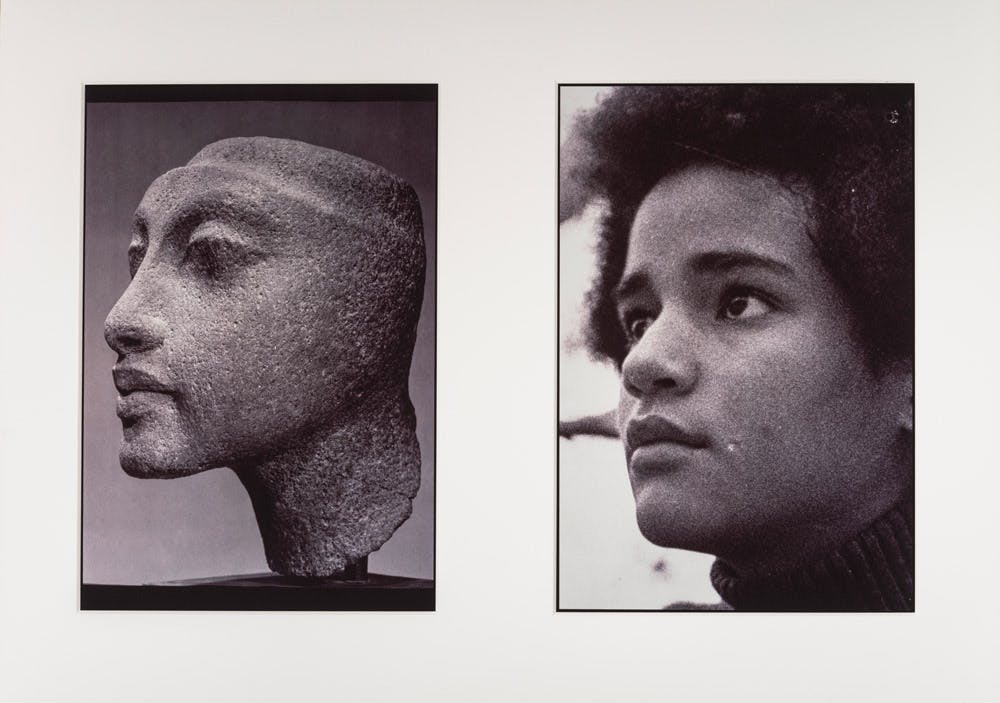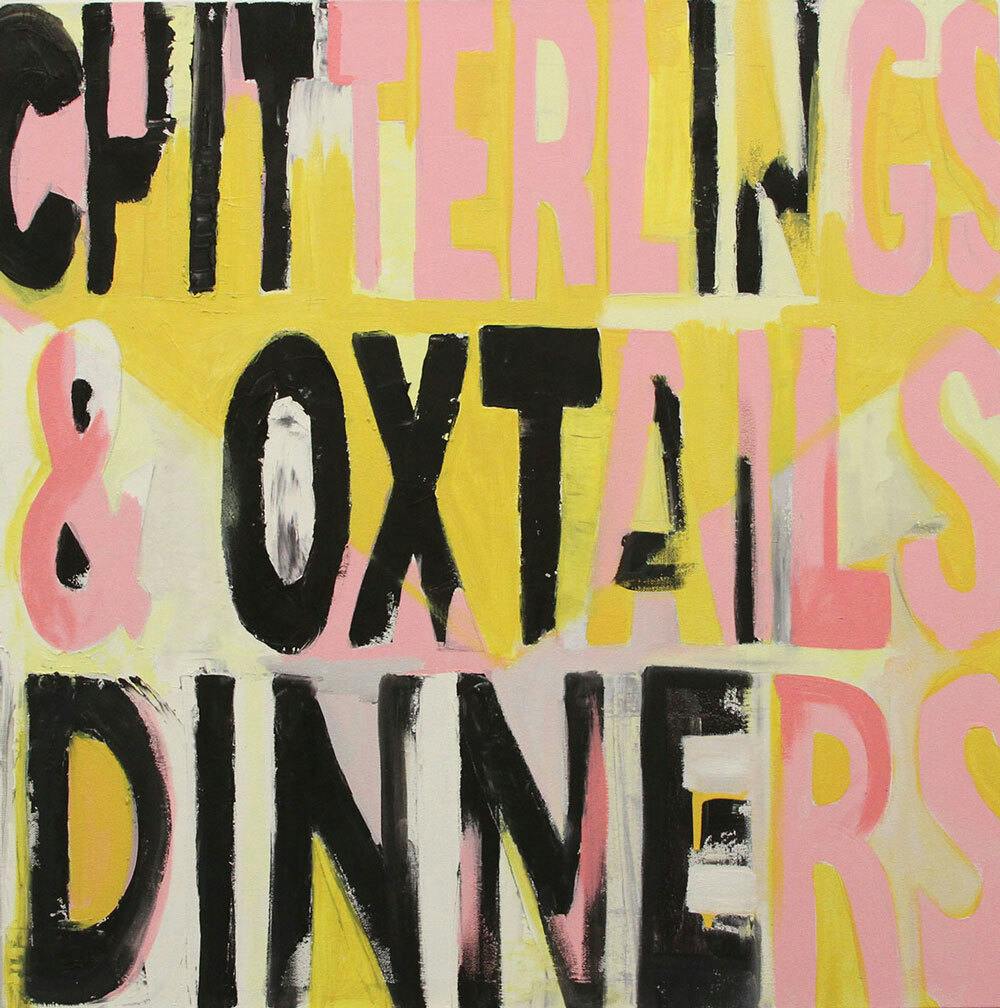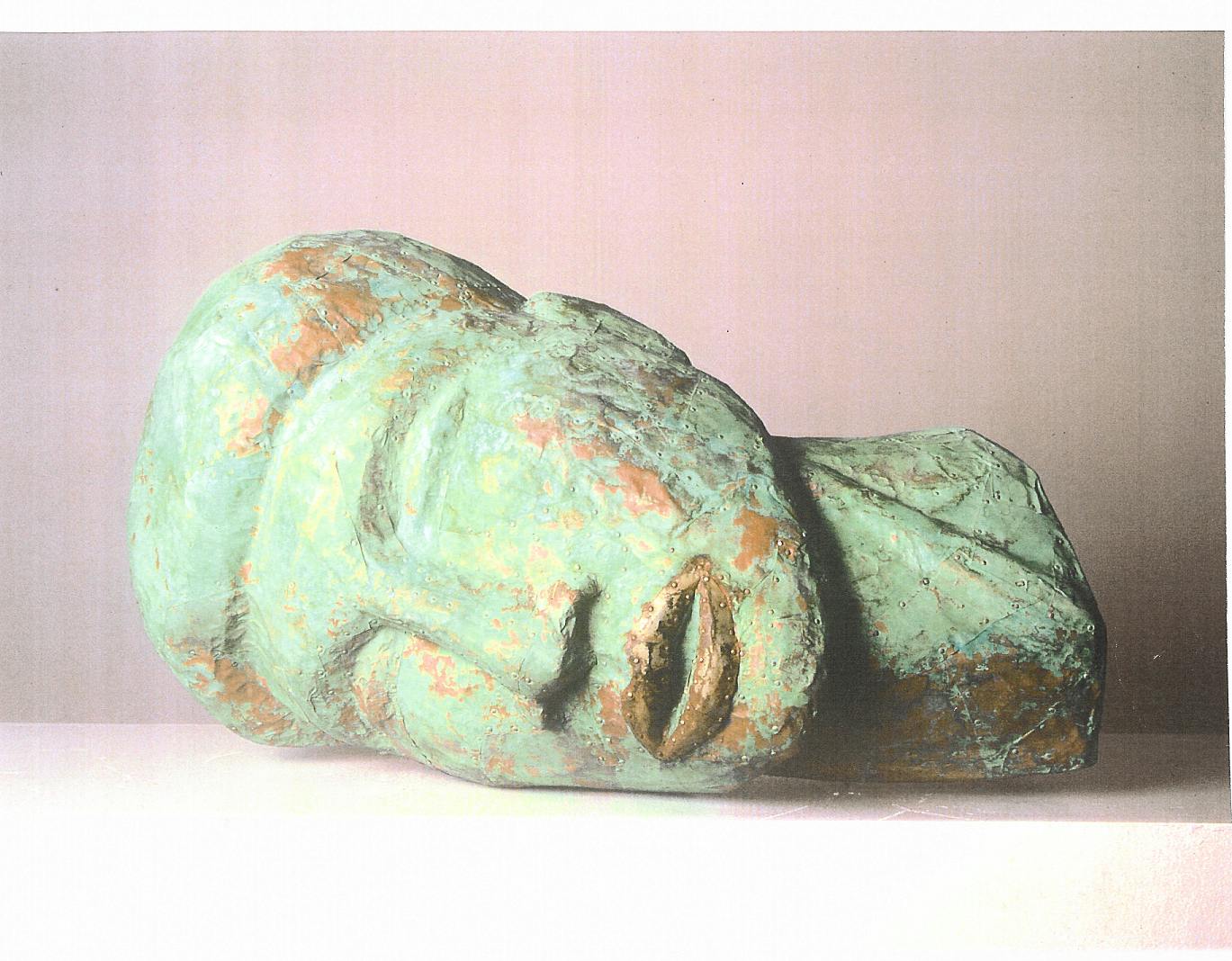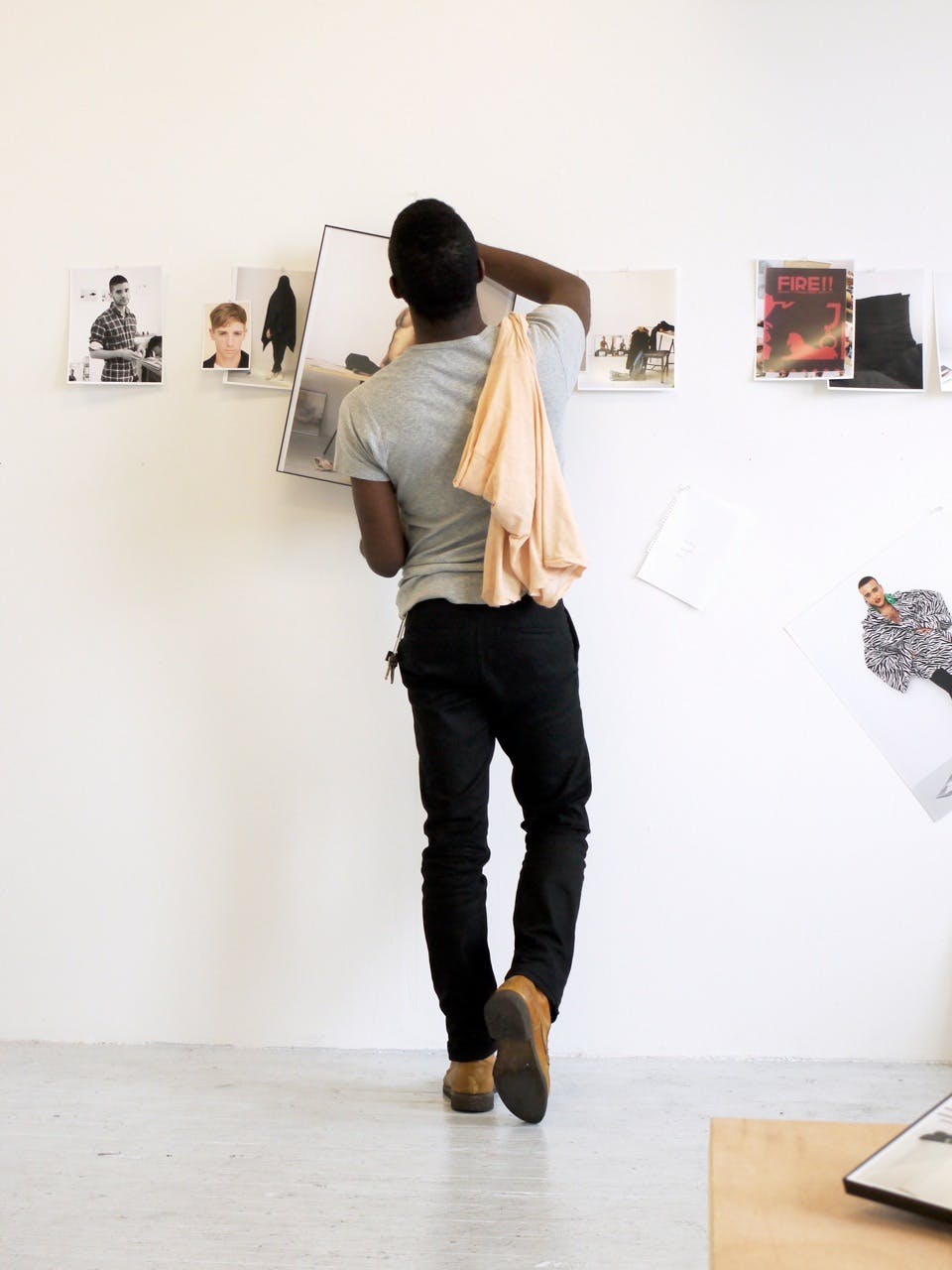Simone Leigh
(b. 1967)
In her work, Simone Leigh centralizes the fluidity of Black femme intellectualism and the anonymity of Black femme labor embedded in material culture.
Biography
Simone Leigh’s work pays homage to ancestry, namely, to Black potters, architects, scholars, and artists, as well as Black radical feminist thinkers.
The artist attended Earlham College in Richmond, Indiana, receiving a BA in philosophy and art in 1990. She was surrounded by ceramics on her college campus as a result of the college’s ties to Japanese artists and teachers. Leigh first tried pottery in the college’s ceramics studio, instructed by professor Michael Tiedman. She encountered the book Nigerian Pottery, which led her to approach labor, especially the labor of Black femmes, as an integral aspect of material culture.
Leigh worked as an intern at Smithsonian National Museum of African Art during her time as undergraduate, working with the curator of ceramics. During her time there, she Xeroxed books and pamphlets that described West and Southern African ceramic-building techniques. She incorporated materials such as cowrie shells, raffia skirts, terra cotta pots, and face jugs into her work to cite such influences. She also references scholars such as Saidiya Hartman, Christina Sharpe, Hortense Spillers and many others, intertwining their frameworks of “critical fabulation,” research-based archival mining, and autoethnographic practice.
Leigh was an artist in residence at the Studio Museum in Harlem from 2010 to 2011 alongside Kamau Amu Patton and Paul Mpagi Sepuya. Her work has been featured in numerous group exhibitions at the Studio Museum, including 30 Seconds Off an Inch (2010); The Bearden Project (2012); In Profile: Portraits From the Permanent Collection (2015); and Regarding the Figure (2017). Her installation A particularly elaborate imba yokubikira, or kitchen house, stands locked up while its owners live in diaspora was featured in the 2017 iteration of the inHarlem series, and her work was first acquired by the Studio Museum in 2011.
Exhibitions and Events
Simone Leigh
(b. 1967)
In her work, Simone Leigh centralizes the fluidity of Black femme intellectualism and the anonymity of Black femme labor embedded in material culture.
No Face (Black), 2015
Biography
Simone Leigh’s work pays homage to ancestry, namely, to Black potters, architects, scholars, and artists, as well as Black radical feminist thinkers.
The artist attended Earlham College in Richmond, Indiana, receiving a BA in philosophy and art in 1990. She was surrounded by ceramics on her college campus as a result of the college’s ties to Japanese artists and teachers. Leigh first tried pottery in the college’s ceramics studio, instructed by professor Michael Tiedman. She encountered the book Nigerian Pottery, which led her to approach labor, especially the labor of Black femmes, as an integral aspect of material culture.
Leigh worked as an intern at Smithsonian National Museum of African Art during her time as undergraduate, working with the curator of ceramics. During her time there, she Xeroxed books and pamphlets that described West and Southern African ceramic-building techniques. She incorporated materials such as cowrie shells, raffia skirts, terra cotta pots, and face jugs into her work to cite such influences. She also references scholars such as Saidiya Hartman, Christina Sharpe, Hortense Spillers and many others, intertwining their frameworks of “critical fabulation,” research-based archival mining, and autoethnographic practice.
Leigh was an artist in residence at the Studio Museum in Harlem from 2010 to 2011 alongside Kamau Amu Patton and Paul Mpagi Sepuya. Her work has been featured in numerous group exhibitions at the Studio Museum, including 30 Seconds Off an Inch (2010); The Bearden Project (2012); In Profile: Portraits From the Permanent Collection (2015); and Regarding the Figure (2017). Her installation A particularly elaborate imba yokubikira, or kitchen house, stands locked up while its owners live in diaspora was featured in the 2017 iteration of the inHarlem series, and her work was first acquired by the Studio Museum in 2011.









